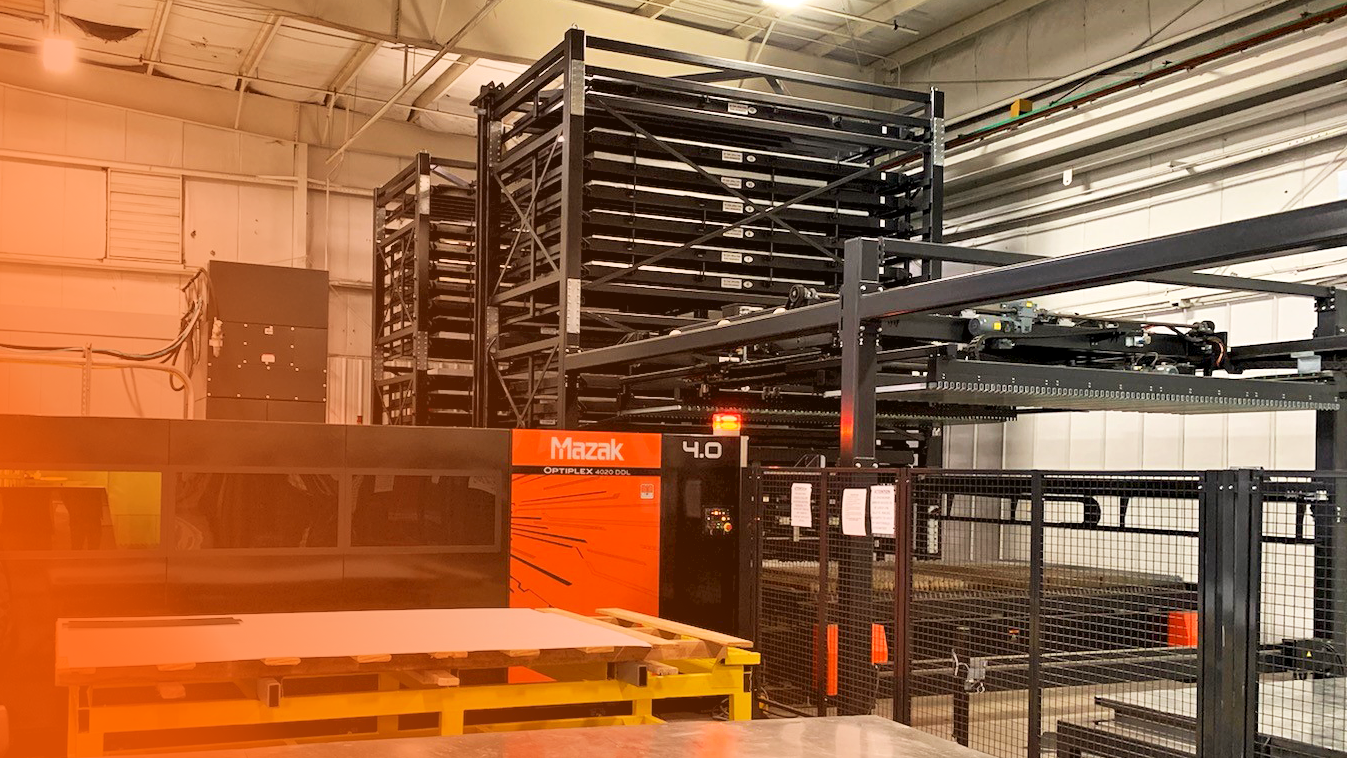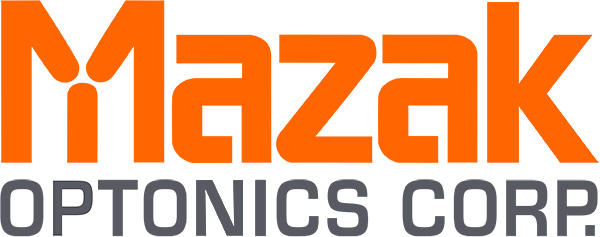Taking on massive HVAC jobs is made easier after a turret punch is replaced with an automated laser solution
Heating, ventilation and air conditioning, commonly referred to as HVAC, is the technology that offers quality air and thermal comfort. People tend to notice this modern luxury most during summer’s hot and humid days or amid winter’s frozen snowy nights.
Providing custom manufactured air handling and hydronic products through innovative design is the specialty of TMI Climate Solutions. The manufacturer has offered pre-piped and wired custom air handling units since the 1980s. Throughout the years, TMI evolved to provide complete factory assembled mechanical “penthouses,” like the type that can be seen sitting on the roofs of commercial buildings and high rises around the country. Mechanical penthouses are, essentially, a small room located on the top of a building where mechanical and electrical equipment, piping systems and other components are housed.
Whether it’s a penthouse on the top of a building or a structure to be placed somewhere else onsite, each TMI system is designed to offer flexibility as the backbone of the company’s turnkey HVAC solutions. From the concept stage through the manufacturing process, the HVAC systems are tailored to promote optimal efficiencies and sustainability to the owner. TMI manages the full scope of the modular climate solutions process by offering construction management, maintenance programs and on-site analysis to give customers a complete solution.
“TMI manages the complete process for a streamlined solution,” explains Matt Young, production manager at TMI. “Similar to a prefabricated home, the systems are manufactured offsite and reassembled onsite. The structure, electric, piping and more are all done internally at TMI’s facility. We ship the solution in modules and then reassemble them onsite. When the entire process is managed by TMI, it speeds up everything else once we’re onsite.”
TMI’s main office and manufacturing facility are based out of Holly, Mich., but the manufacturer also has a new 200,000-sq.-ft. facility in Pointe-Clair, Quebec, to increase global manufacturing and export capacity. With every project being custom engineered to meet specifications, customers are now able to access faster order processing and unparalleled delivery times for a range of HVAC solutions.
Cooling needed
Customizable modular engineering makes it possible to serve a variety of industries and customers, such as government facilities, data centers, health care institutions, industrial settings, automotive factories and more.
The Ford Engine Plant in Lima, Ohio, illustrates what these custom modular climate-controlled systems can do. The plant required an additional 5,200 tons of cooling to supplement its existing chilled water system, which is fed by an underground geothermal well water system.
While this already sounds like a massive undertaking, the best place for the new chilled water system was inside the engine plant, which prompted TMI to create a modular chilling system. Offering a solution that could be completely manufactured at the Holly facility, TMI allowed for minimal disruption at Ford. More than 90 percent of the chiller system was manufactured offsite then placed inside the Ford plant in less than a week with major tie-ins occurring over the weekend.
From Turret to Solid State Laser
To create these modular systems, Mario Pulido, manufacturing engineer at TMI, says over the last five to 10 years, the company began transitioning toward more efficient processing. The company’s turret punch was one of the machines addressed in the transition.

“Our customer base was 80 to 90 percent automotive,” Pulido begins, “but we started to diversify and develop additional types of modular structures for a broader clientele. In trying to produce these new modular systems, we discovered there were materials required for the larger systems that we couldn’t cut in-house with the turret equipment. We also started running thicker materials, which needed to be cut with a laser.”
TMI’s sheet metal operations previously involved six people running shears and two older turret punches. The two-step process involved cutting on a shear and then taking that part to the punch for notches and holes.
“We had a bottleneck in the sheet metal department,” Pulido explains. “We had capacity issues with the turret punch, but replacing the old machine with a new one was not going to help our throughput issues.”
Young reaffirms, adding that the “turret punch was beyond living on its last leg. We needed something to replace it, regardless. We wanted a bigger, better, faster, automated and more capable solution. Mario and I were thinking a laser, but some of the other team members were thinking another punch.”
While CO2 lasers still have their niche in the market, based on the materials being cut and the speed needed to increase throughput, Young and Pulido were confident that a fiber laser would excel on their shop floor.
“When we first started this project,” Young says, “we were told there was no way we were going to get a budget for a laser. So, we started looking at turret punches again. But due to some internal changes, Mario’s return on investment analysis was revisited and we were able to get the laser budget submitted and approved.”
In addition to the materials that could be processed with the fiber and the speed of a fiber laser cutter, future growth was a major focus when investing in the new equipment. It was a key driver in TMI’s change of heart.
“The biggest thing was that everyone wanted the company to grow,” Pulido recalls. “We were already at maximum throughput with the machines that we had. Internal analysis indicated that there could be at least a 25 percent increase in throughput in the sheet metal department with the addition of a laser. This is what sold everyone on the laser and then later, the automation system.”
Pulido clarifies the process that led TMI to its laser solution, saying that Bryan Lopus at Modern Machinery, a fabricating equipment distributor, walked the team at TMI through various options based on the company’s production needs.
“He asked us for our material list and was able to direct us from there,” Pulido says. “He got us exactly what we needed without over or under sizing the overall solution.”
After fully vetting a range of options, TMI decided on a Mazak 4-kW OPTIPLEX 4020 DDL laser with a Mazak MCS automation solution with dual towers, totaling 27 shelves. They chose the 4020 table size because “while our standard sheet is 60 in. by 144 in.,” Pulido explains, “the 4020 allows us to process larger sheets, which fits in with our growth plans.”
Another deciding issue was parts accessibility. In an ideal world, nothing goes wrong, but in reality, spare parts and consumables are required from time to time.

“Mazak’s parts capacity was another deciding factor,” Young says. “When you can’t get parts, it can be tragic. Waiting for the part to ship, then having to wait for an engineer to come out to rebuild and install it can obviously have a negative impact on throughput. We liked that Mazak can ship parts overnight.”
Direct Benefits
One of the factors that played into TMI’s decision to invest in a Mazak laser cutter was Mazak’s proprietary DDL technology. The combination of wavelength and beam profile makes DDL unique compared to fiber and CO2. The wavelength for DDL absorbs into the metal better, which means faster cutting speeds. Additionally, the beam profile helps produce a cleaner edge quality, similar to what is seen with CO2 technology. This combination makes DDL technology a breakthrough.
“We have a lot of exposed edges in our products,” Young says, “so having clean-cut edges is important. We’re saving significant time because we don’t have to deburr.”
Pulido adds another major advantage to DDL is the energy efficiency it delivers. DDL has wall-plug efficiency around 45 percent compared to fiber laser technology. This is due to DDL’s power source, which is more efficient because there is no gain medium that needs to be excited. DDL also utilizes its diodes directly, eliminating the doped fiber system that is used in traditional fiber laser technology.
Perfectly Automated
While investing in a laser would help with throughput, the team at TMI recognized that automation would be a mandatory part of the overall productivity enhancement equation.
“We wanted to store a large amount of stock material, so we wouldn’t need to load the machine all the time,” Young says. “We have a lot of material sizes, thicknesses and types, so we needed the dual towers. It was also helpful that we were accustomed to towers used for our pre-existing turret punch.”
Storage and towers – one with 15 shelves and another with 12 shelves – were part of TMI’s chosen automation package. Since installation, the company has seen significantly reduced loading times – a major solution to the bottleneck previously seen in the cutting department.
In addition to reducing bottlenecks, TMI also wanted automation with longevity. Young says that during the vetting process, the company was looking for something that provided “heavy-duty, robust automation” that could keep up with the speed of the laser cutter. If a laser cuts quickly, it’s vital to have an automation system that can stay on pace.
“We don’t cut 200 to 300 parts on a sheet,” Pulido says. “Sometimes, a sheet is just a couple parts and is processed in less than 2 min. With the automation, we needed a system that could load and unload the material quick enough so that the laser machine wasn’t sitting idle.”
Thinking long term, TMI specifically chose automation that would grow with the company. Pulido says they picked the MCS automation system because it is expandable, allowing them to add another laser or different automation features later.
Since the laser cutting machine and automation system were installed at the end of 2019, TMI’s sheet metal productivity has grown exponentially. Pulido explains that the company’s most obvious improvements are seen in the ability to run more material and increase overall throughput.

“Our initial goal was to cut down our production time by 25 percent,” Pulido says. “Compared to the previous process, which was a two-step operation between the shear and the turret punch, we’ve saved a lot of time. Now, the laser is doing all of that work in one run, which has greatly improved run-time and efficiency.”
Overall, TMI reduced manpower from six people between the two operations to two full-time employees – one running the laser and one sorting the cut parts.
“We were able to repurpose these workers and transition them into different roles,” Pulido adds. “It’s been a great thing.”
Article published in the June issue of FAB Shop Magazine Direct.
